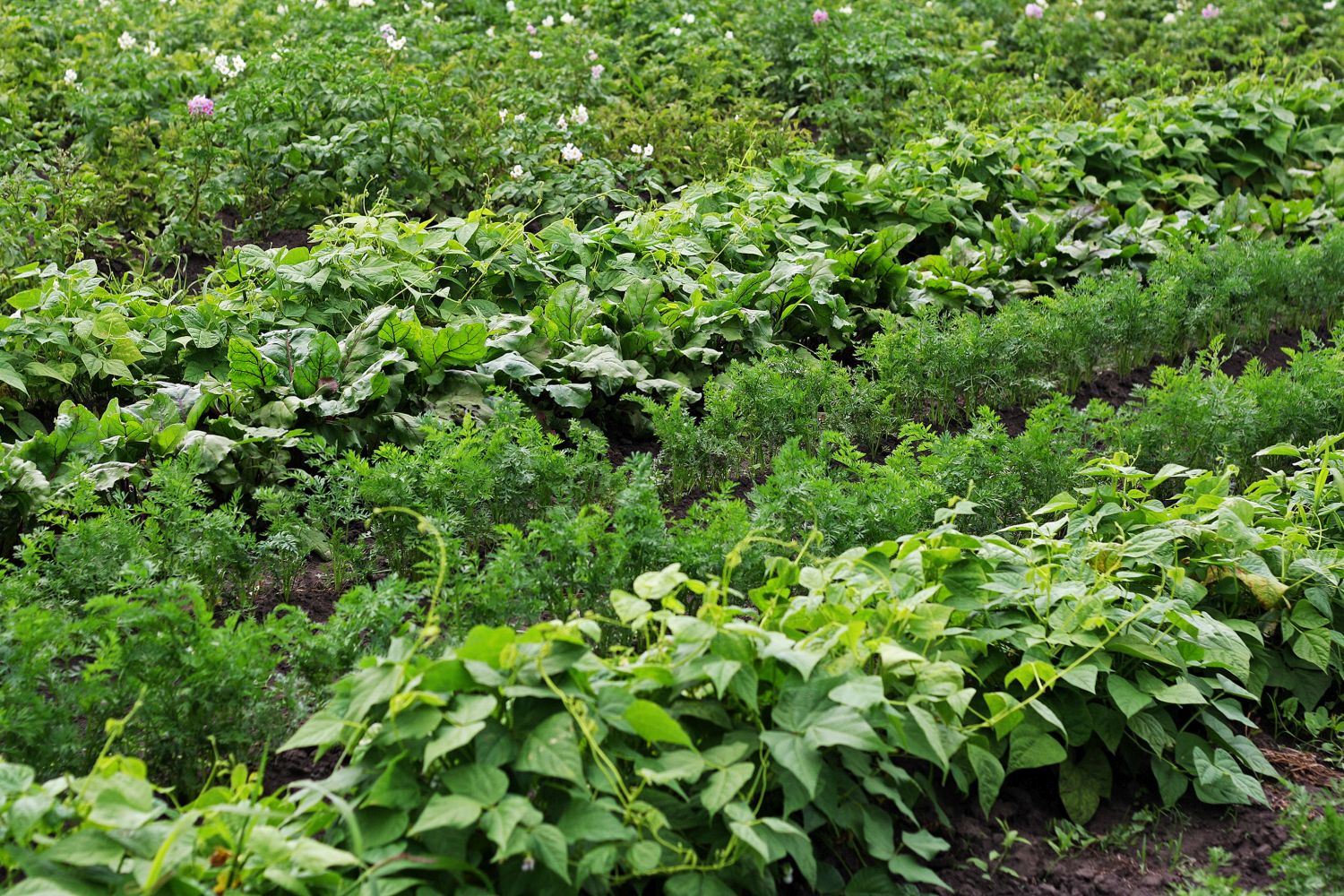Double Your Yield With Interplanting Potatoes
Double Your Yield With Interplanting Potatoes
Potatoes are a delicious and versatile vegetable that can be enjoyed in many different ways. They are also relatively easy to grow, making them a popular choice for home gardeners. But did you know that you can actually double your yield of potatoes by interplanting them with other crops?
Interplanting is a gardening technique that involves planting two or more crops in the same space. This can be done in a variety of ways, but the most common method is to plant the crops in alternating rows. Interplanting has a number of benefits, including:
- Increased yield: Interplanting can help to increase the yield of both crops by making more efficient use of space. The taller crop will provide shade and protection for the shorter crop, which can help to reduce pests and diseases. Additionally, the roots of the two crops can help to improve the soil quality and drainage.
- Improved soil quality: Interplanting can help to improve the soil quality by providing a variety of nutrients and organic matter. The taller crop will shed leaves and other organic matter, which will decompose and add nutrients to the soil. The shorter crop will also help to break up the soil and improve drainage.
- Attraction of beneficial insects: Interplanting can help to attract beneficial insects to the garden. These insects can help to control pests and diseases, which can further improve the yield of both crops.
- Reduced need for herbicides and pesticides: Interplanting can help to reduce the need for herbicides and pesticides. The taller crop can help to shade out weeds, and the beneficial insects that are attracted to the garden can help to control pests.
If you are interested in interplanting potatoes, there are a few things you need to keep in mind. First, you need to choose crops that will complement each other. Some good companion crops for potatoes include:
- Beans: Beans are nitrogen-fixing plants, which means they can help to add nitrogen to the soil. This can be beneficial for potatoes, which are heavy feeders.
- Carrots: Carrots have shallow roots, which will not interfere with the deeper roots of potatoes. They also help to repel pests.
- Cucumbers: Cucumbers are vining plants that can grow up the stalks of potatoes. This can help to create a more efficient use of space.
- Lettuce: Lettuce has shallow roots and can be planted between rows of potatoes. It also helps to suppress weeds.
- Peas: Peas are nitrogen-fixing plants, like beans. They also help to attract beneficial insects.
Once you have chosen your companion crops, you need to plant them in alternating rows. The taller crop should be planted in the rows that receive the most sunlight. The shorter crop can be planted in the rows that receive less sunlight.
Interplanting potatoes is a simple and effective way to increase your yield. By following a few simple tips, you can enjoy a bountiful harvest of potatoes and other vegetables.
Interplanting potatoes is a great way to maximize your garden space and improve the overall health of your crop. By planting potatoes alongside other companion plants, you can help to deter pests, improve soil fertility, and increase yields.
Some of the best companion plants for potatoes include:
- Alyssum: This ground-cover flower attracts beneficial insects and helps to suppress weeds.
- Cabbage family plants: These plants have shallow root systems that won't compete with potatoes for space or nutrients.
- Corn: Corn provides shade and support for potato plants, and it also helps to attract pollinators.
- Legumes: Legumes fix nitrogen in the soil, which can help to improve the health of your potato plants.
- Marigolds: Marigolds repel nematodes, which are a common pest of potato plants.
If you're interested in learning more about interplanting potatoes, I recommend visiting Gardenia Inspiration. This website has a wealth of information on the topic, including planting tips, companion planting charts, and troubleshooting advice.
FAQ of interplanting potatoes
null
Image of interplanting potatoes
Here are 5 images of interplanting potatoes from Pinterest:
- Image 1: This image shows potatoes being interplanted with carrots. The carrots help to suppress weeds and improve the drainage of the soil, while the potatoes provide shade for the carrots during hot weather.

- Image 2: This image shows potatoes being interplanted with beans. The beans fix nitrogen in the soil, which benefits the potatoes. The potatoes also provide support for the beans to climb.

- Image 3: This image shows potatoes being interplanted with peas. The peas add nitrogen to the soil and help to suppress weeds. The potatoes provide shade for the peas during hot weather.

- Image 4: This image shows potatoes being interplanted with spinach. The spinach helps to suppress weeds and improve the drainage of the soil. The potatoes provide shade for the spinach during hot weather.

- Image 5: This image shows potatoes being interplanted with tomatoes. The tomatoes help to deter pests and diseases from the potatoes. The potatoes provide shade for the tomatoes during hot weather.
Post a Comment for "Double Your Yield With Interplanting Potatoes"